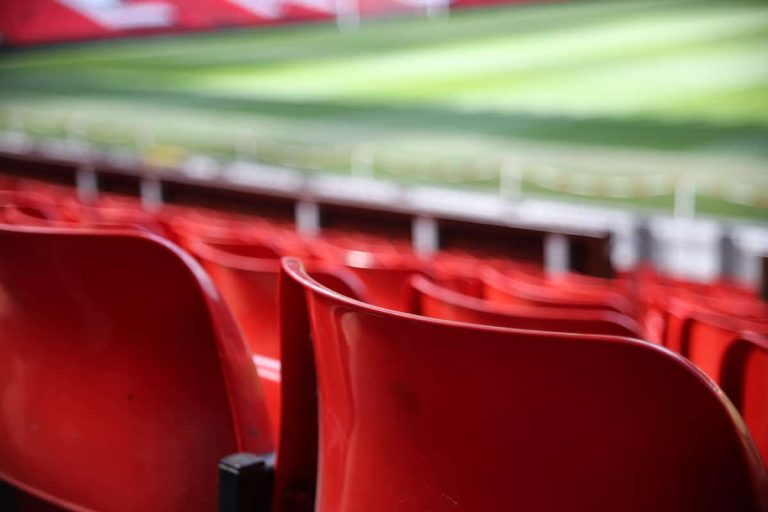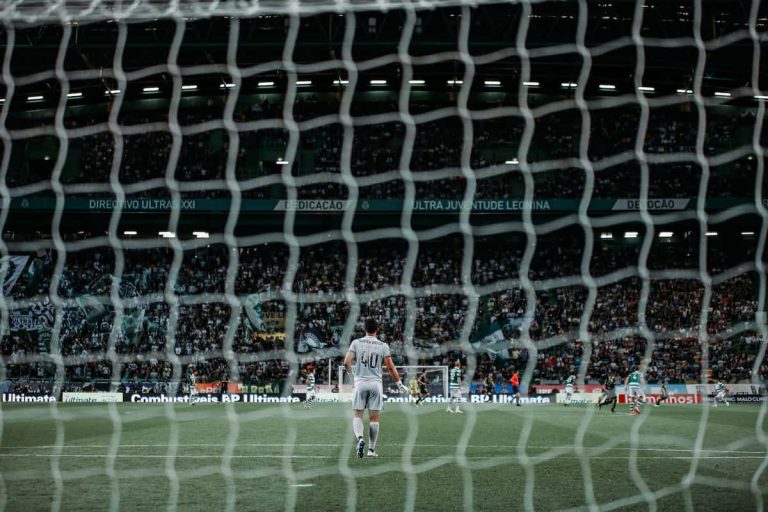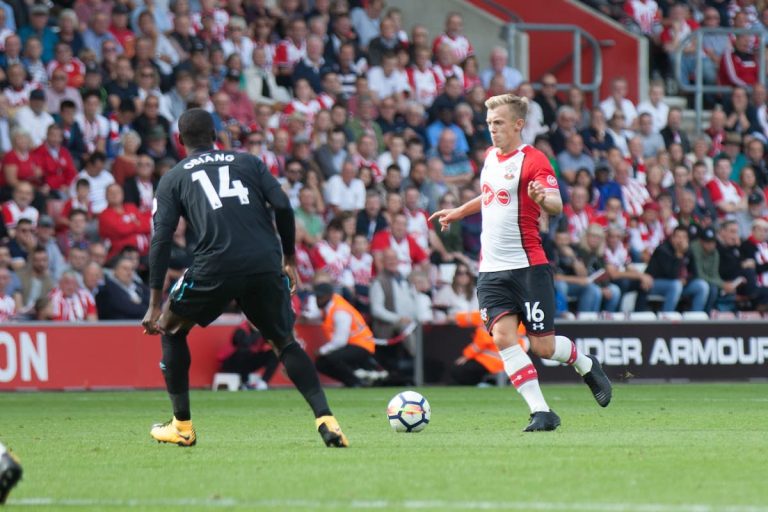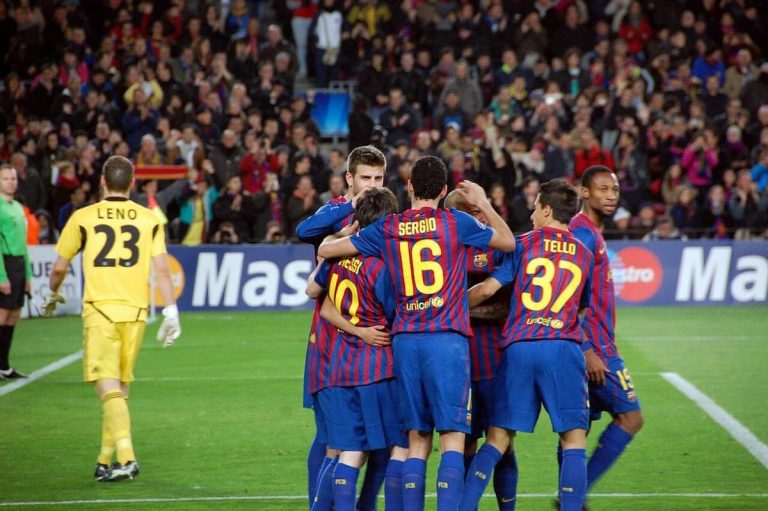How Is Football Data Collected?

Table of Contents
How Is Football Data Collected?
Football data collection is recorded by a team of analysts at each match. A video-based collection system is used by trained football data collectors to analyse each action during a match. Once a match has finished, further analysis is conducted to ensure that the data is as accurate as possible.
The Role of a Football Data Collector
As the title suggests, football data collectors are responsible for data collection during football matches. They log each action of a match as it happens through different manual processes using a computer.
Data analysts have a full view of the pitch via their computers, which is made possible by the several video cameras installed at each football stadium. These cameras cover every angle of the pitch, making it possible to monitor each player’s movement during a match.
Pre-Match Role of a Football Data Collector
Before a football match has kicked off, a football data collector will make sure that all equipment is working properly. If they are present at the football stadium, they’ll check that all the cameras are turned on and functioning, as well as their laptops and any other equipment required.
If they’re in an office elsewhere conducting football data collection, they’ll need to ensure that their connection to the live feed for the match is working.
Pre-match is a great time for analysts to check the starting line-ups for each team. From there, they can assign markers on their system for each player. Once each player has a marker assigned to them, the data collector can start tracking their actions during the game.
Data collectors might also choose to do some research about the game they are about to watch. This might be helpful as they’ll be in a better position to predict how the match might play out in front of them.
Role of a Football Data Collector During a Match
Once a football match has kicked off, data collectors will start manually tracking each action that takes place via manual clicks. Analysts will log passes by clicking and dragging their mouse from the position where a pass is received, highlighting which player has made the pass.
As well as passes (both short and long), shots, tackles, interceptions and many more actions will be manually logged. Depending on the level of technology used at the ground, player movement can be automated through the use of several HD cameras.
Something to note is that stoppages in a football match, although frustrating for spectators, are a saving grace for analysts. If a long goal celebration takes place, analysts will use the opportunity to rewind the match to check that their data inputs were correct.
Data collectors might work as part of a wider team, for example a three-person team for each match. It’s also likely that a quality control analyst will be present with the data collection team. They’ll be responsible for rewinding any actions to make sure that the information being recorded by the analysts is as accurate and consistent as possible.
A quality control analyst will also be helpful in moments where tough calls need to be made on a dispute between the other analysts.
Post-Match Role of a Football Data Collector
Once a football match has finished, an extensive post-match check is carried out by analysts to check that the data collected was as accurate as possible.
This will involve rewatching the match and working together as a team to check that the data is correct. Because there’s no time pressure for the analysts after the match, any disputes or decisions that need to made can be discussed in a timely manner.
Football Data Collection Issues
Unclear Football Kits
There have been instances when football kits have provided issues for football data collection. If each player’s name and number is difficult to see on the back of their shirts, analysts can find it difficult to recognise them.
Analysts primarily use shirt numbers to recognise each player, so they need to ensure that each team’s kit is clear to see when they’re collecting data.
Technology Troubleshooting
Like any job that requires the use of technology, there can be issues when collecting football data.
If technological issues arise, meaning that a team of analysts can’t collect data for a chosen game, it will have to be completed as a full post-match review. It’s rare that a full-match recording won’t be available after the match has finished, so analysts will use this recording to carry out their analysis.
Player Clusters
Sometimes during football matches, the cameras used for data collection are unable to tell each player apart if they’re clustered together in a group on the pitch. This means that human intervention is required in order to successfully collect data. This should easily be resolved by an analyst, assuming that they’re able to recognise each player in the cluster.
Unusual Team Formations
For analysts, some games will be easier to log than others. One of the reasons why a match might be harder to log is due to unusual team formations. If a team uses an unusual formation, the more difficult it is to log. This is because it’s harder to track players in their positions during the match.
An example of an easy side to log would be a well-organised Manchester City side. Pep Guardiola’s men are very well-structured, and they have lots of possession during a match. This makes a football analyst’s life much easier when logging data.
Human Error
Another key issue with football data collection is human error. Like many other industries where number collection is essential, human imperfection is going to play its role. This means that as long as humans are involved in the football data collection process, it’s unlikely that it’ll ever be 100% accurate.
How is Possession Calculated in Football?
One of the most commonly-use stats in football, ball possession, is actually one of the most difficult to measure. Companies now use something similar to a chess clock to calculate possession. Each team has a clock and only one is running at a single time, so once a tackle is made or the ball goes out of play, the others team’s clock is restarted.
From there, football data collectors can work out the overall percentage of possession for each team based on the two stopwatch totals.
Different Match Statistics
Managers, coaches, pundits, journalists and fans are able to see a range of different match statistics during and after a match has taken place due to the tireless work carried out by football data collectors. The standard of football data collection now means we have access to data such as xG, xA and receptions.
Match statistics are recorded to be as precise as possible in order to make the analysis of matches as easy as possible. For example, passes could just be collected as one single metric, however instead, football data companies collect data in the following groups – Passes, passes per match, pass accuracy, short/long passes and backward passes.
How Accurate Is Football Data Collection?
There are different providers of football data collection, including private companies like Opta Sports. They claim to make their football statistics as close to 100% accuracy as possible. Some other providers have claimed that their football data is as high as 95% accurate.






